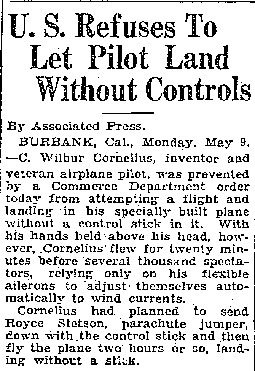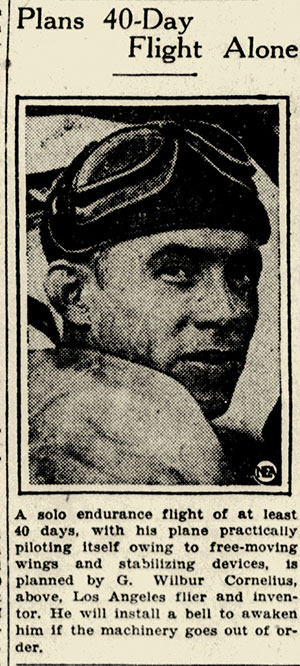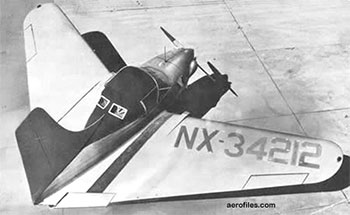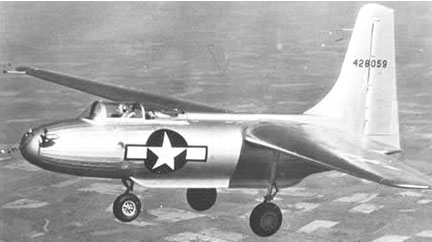THANK YOU!
YOUR PURCHASE OF THESE BOOKS SUPPORTS THE WEB SITES THAT BRING TO YOU THE HISTORY BEHIND OLD AIRFIELD REGISTERS
Your copy of the Davis-Monthan Airfield Register with all the pilots' signatures and helpful cross-references to pilots and their aircraft is available at the link. 375 pages with black & white photographs and extensive tables
---o0o---
The Congress of Ghosts (available as eBook) is an anniversary celebration for 2010. It is an historical biography, that celebrates the 5th year online of www.dmairfield.org and the 10th year of effort on the project dedicated to analyze and exhibit the history embodied in the Register of the Davis-Monthan Airfield, Tucson, AZ. This book includes over thirty people, aircraft and events that swirled through Tucson between 1925 and 1936. It includes across 277 pages previously unpublished photographs and texts, and facsimiles of personal letters, diaries and military orders. Order your copy at the link.
---o0o---
Military Aircraft of the Davis Monthan Register, 1925-1936 is available at the link. This book describes and illustrates with black & white photographs the majority of military aircraft that landed at the Davis-Monthan Airfield between 1925 and 1936. The book includes biographies of some of the pilots who flew the aircraft to Tucson as well as extensive listings of all the pilots and airplanes. Use this FORM to order a copy signed by the author, while supplies last.
---o0o---
Art Goebel's Own Story by Art Goebel (edited by G.W. Hyatt) is written in language that expands for us his life as a Golden Age aviation entrepreneur, who used his aviation exploits to build a business around his passion. Available as a free download at the link.
---o0o---
Winners' Viewpoints: The Great 1927 Trans-Pacific Dole Race (available as eBook) is available at the link. This book describes and illustrates with black & white photographs the majority of military aircraft that landed at the Davis-Monthan Airfield between 1925 and 1936. The book includes biographies of some of the pilots who flew the aircraft to Tucson as well as extensive listings of all the pilots and airplanes. Use this FORM to order a copy signed by the author, while supplies last.
---o0o---
Clover Field: The first Century of Aviation in the Golden State (available in paperback) With the 100th anniversary in 2017 of the use of Clover Field as a place to land aircraft in Santa Monica, this book celebrates that use by exploring some of the people and aircraft that made the airport great. 281 pages, black & white photographs.
---o0o---
YOU CAN HELP
I'm looking for information and photographs of pilot Cornelius and his airplane, NX182W, to include on this page. If you have some you'd like to share, please click this FORM to contact me.
---o0o---
SPONSORED LINKS
PLEASE HELP KEEP THESE WEB SITES ONLINE
FOR YOUR CONVENIENCE
You may NOW donate via PAYPAL by clicking the "Donate" icon below and using your credit card. You may use your card or your PAYPAL account. You are not required to have a PAYPAL account to donate.
Or you can scan the QR code below with your mobile device and be linked to your PayPal app.
 |
|---|
Either way, when your donation clears the PAYPAL system, a certified receipt from Delta Mike Airfield, Inc. will be emailed to you for your tax purposes.
---o0o---
Thanks to Guest Editor Bob Woodling for help researching this page.
---o0o---
GEORGE WILBUR CORNELIUS
 |
G.W. Cornelius landed once at Clover Field, on Tuesday, October 20, 1931. He carried a single unidentified passenger. They flew an unusual aircraft of Cornelius' design and manufacture called the Cornelius Fre-Wing, NX182W. You may view a photograph of that airplane at the link.
According to aerofiles.com, the history of the company that built this airplane was as follows. In 1930, its founder George Wilbur Cornelius established the Cornelius Aircraft Co. at Glendale CA. About 1935 the company moved to Van Nuys CA; in 1940 to Dayton OH. In 1941, it was renamed the Cornelius-Hoepli Co.
Cornelius and his airplane made the rounds of west coast environs during the early 1930s. The article, right, from Popular Aviation (PA) magazine, 1929, documents a flight he made with NX182W from Los Angeles to San Francisco, CA. The article describes some of the safety features of the Fre-Wing design.
 |
As well, besides his single presence at Santa Monica, his airplane shows up during 1931 at least 39 times in the Grand Central Air Terminal Register. And immigration forms from San Diego, CA record several excursions in 1933 across the southern border to Agua Caliente, Mexico and back. An example, left, is from July 6, 1933.
An article that appeared in the Seattle Daily Times on May 9,1932 described a stunt that Cornelius and fellow Register pilot Royce Stetson (active as a parachutist at the time) planned in order to demonstrate the self-stabilizing safety of his airplane. The article is below. The Department of Commerce witheld permission for the duo to perform the flight.
 |
 |
Six months earlier, Cornelius planned a solo endurance flight with NX182W. It was described in the unsourced news article, left, from November 1931.
Cornelius was registered for the draft on September 12, 1918. The registration card identifies his address as Marion, OR and his occupation at the time was "mechanic-farmer" working for the Studebaker Corporation. One thing curious about his draft registration was that his first and middle names were switched. He was registered for the WWI draft as "Wilbur George Cornelius." Likewise, the U.S. Census for 1920 lists his name as Wilbur Cornelius (age 20) living in Pullman, WA with his father, mother and two siblings. His occupation was cited as "none."
The only information I could find about his early or formal education appeared in the U.S. Census for 1940. It states he completed the second year of high school and no college. Given that, he identified his occupation as "aeronautical engineering," working in the "Aircraft Designing" industry. He was living and working in Tulsa, OK at the time, which, if you explore aerofiles.com at the link above and scroll down to "Cornelius," makes sense, because the aircraft he was working on at the time were built by the Spartan Aircraft Corporation at Tulsa.
As a sign of the times, the Census form states that he worked only 28 weeks during 1939 and earned $900 for his time. Likewise, the Census form identified his marital status as married, but his wife and family were not listed on the form, which was taken in Philadelphia, PA, indicating he was traveling at the time the Census taker worked with him on April 8, 1940. Indeed, he was a guest at the Sylvania Hotel at the corner of Juniper and Locust Streets.
What about the airplanes Cornelius designed and built during the 1930s and early 1940s? Besides NX182W, which is examined at its link above, Cornelius also designed several aircraft that were not made. One example from 1934 is below from the patent paperwork. It was a unique (for the time) canard design with a pusher engine. Cornelius has a sparse Web presence, with some of the links leading to his patents.
 |
He also designed, made and flew the Cornelius LW-1, NX13706 (not a Register airplane), which was a low-wing model with open cockpits. The angles of attack of the wings were individually and passively changed at the wing roots, thus eliminating ailerons.
A description of the LW-1, and a photograph of NX13706, appeared in Popular Aviation magazine, June, 1934. You may download the article at the link (PDF 1Mb). Another safety feature of this airplane is that it was equipped with a whole-plane parachute, which, in an emergency, could be deployed to bring the whole airplane more or less safely to the ground. In addition, release of the parachute automatically shut down the engine to prevent the 'chute from tangling with the turning propeller. And if that wasn't enough, upon landing the wings could be removed and the fuselage driven home as an automobile due to a gearing mechanism that disconnected engine power from the propeller and transferred it to the front landing gear tires. I examined the photographs in the article, and I'm not exactly sure how that power transfer was achieved. It is also not clear from the article if Cornelius is pictured among any of the men in the photographs. This airplane was made at Van Nuys, CA, Metropolitan Airport. I have no photos of Cornelius. If you can help, please let me KNOW.
 |
Cornelius' third design was called the Cornelius Mallard, NX34212 (not a Register airplane). It was a departure from standard design in that it had forward swept wings and no horizontal stabilizer. Instead, its wing trailing edges near the roots had what looked to be elevators. Unlike its predecessors, it also had ailerons. Photograph, left, is from aerofiles.com.
His final design, about 1944, was the Cornelius XFG-1 fueling glider. This design, with aspirations for sales to the military, resulted in three aircraft built and tested. The glider was designed to carry 764 gallons of fuel, or, I suppose, any liquid. The glider with a pilot could be towed to its destination where it would glide to a landing and deliver its contents on the ground. Or the pilotless glider could be tethered to a larger bomber via a hose that would sip fuel from the glider, which would be jettisoned when empty. Regardless, it shared the forward swept wings and ground-adjustable variable incidence wings of earlier models. Photograph, below, right, is from aerofiles.com. The end of WWII resulted in cancellation of government interest.
 |
As far as I know, none of the Cornelius designs ever received an Approved Type Certificate from the Department of Commerce. His total output of aircraft was six, NX182W, NX13760, the Mallard and three examples of the XFG-1 glider. More information about the Cornelius designs, and photographs, is available at the link.
The Fre-Wing wasn't the only creative design applied to aviation safety during the Golden Age. For comparison please direct your browser to the The William H. McMullen Naval Aviation Photograph Collection and scroll down to read about and view the photographs of the "CIT-9 Safety Plane."
Cornelius was born September 26, 1899 and flew West on August 6, 1981. He flew with pilot certificate 19369.
---o0o---
SPONSORED LINKS
THIS PAGE UPLOADED: 08/02/14 REVISED: 09/07/18
